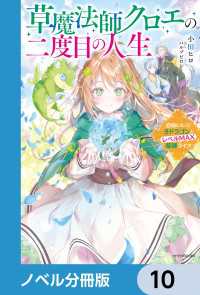Description
A Linguistic Image of Womanhood in South Korea examines the verbal and non-verbal techniques used by contemporary South Korean women to navigate their society.
South Korea is extremely hierarchical, and this is expressed through a complex array of different politeness levels in words, gestures, and behaviours. These hierarchies were formed over 500 years ago with the introduction of Neo-Confucianism from China, but patriarchal and paternalistic values still linger in contemporary Korean society. In this book, the authors have coined the term ‘language cosmetics’ to describe how women in South Korea modify their language and behaviour to conform to social expectations. The book examines womanhood and femininity as seen in popular Korean films, K-dramas, and K-pop. The authors note that feminine language and behaviour are not limited to women (as seen by the practice of aegyo or ‘acting cute’ within Korean boy bands), and they describe the tensions between gender hierarchy and socioeconomic status (as seen in the powerful and elegant samonim ladies of K-drama).
This book will be informative for those studying and researching in the fields of Asian studies, cultural studies, linguistics, and East Asian languages, particularly those analysing how society and gender have an impact upon language.
Table of Contents
List of figures
List of tables
Acknowledgments
Preliminaries
1. Introduction
1.1 Studies of Women’s Languaging Habits
1.2 The Case of Japan
1.3 What are Language Cosmetics?
2. Womanhood in Neo-Confucian Society - Past and Present
2.1 Introduction
2.2 Transition from Goryeo
2.3 The Making of Womanhood in Joseon
2.3.i Women’s place
2.3.ii Oryun (五倫) ‘Five Relations’
2.3.iii Women’s Virtues
2.3.iv Admonishment for Women
2.3.v Women’s Misconduct
2.3.vi Women’s Education
2.3.vii Women’s Sorrow Han (恨): The Untranslatable Grief
2.4 Between the Joseon dynasty and contemporary Korean society
2.5 Neo-Confucianism in Contemporary Korea
2.5.i Father-son relation (bujayuchin 父子有親)
2.5ii King-Vassal Relation (gunsinyuui 君臣有義)
2.5.iii Husband-Wife Relation (bubuyubyeol 夫婦有別)
2.5.iv Sibling relation (hyeongjeuae 兄弟友愛)
2.5.v Old-young relation (jangyuyuseo 長幼有序)
2.6 Marriage Migration
2.7 Exceptions: Gen Z in the Metaverse
2.8 Patriarchy in North Korea
2.9 Summary
3. The Linguistic Landscape of Korea
3.1 A Fine Line Between Nature and Nurture
3.1.i Studies of East Asia
3.1.ii The Need to Avoid Generalisation
3.2 The Influence of the Linguistic Landscape
3.2.i Feminisation of Professional Titles
3.2.ii Meanings of Yeosa (女史)
3.2.iii Problematic Family Address Terms
3.2.iv Terms of ‘Endearment’
3.2.v Moving Towards a Gender-Neutral Language
3.3 Case Study: Invisible and Unheard in 100 Minute Debate
3.4 Summary
4. Language Cosmetics
4.1 Introduction
4.2 Language Cosmetics: More than Verbal Hygiene
4.3 Aegyo as a Linguistic Cosmetic
4.4 ‘Generation MZ’ women
4.4.i The Fist Pump
4.4.ii Closing eyes
4.4.iii Hand over heart
4.5 Online Language Cosmetics
4.6 Summary
5. Language Cosmetics in Non-Verbal Behaviour
5.1 Introduction
5.2 Neo-Confucian Non-Verbal Indicators of Politeness
5.3 Gender and Gesture
5.5 The Samonim Dynamic
5.6 Summary
6. Conclusion
6.1 The Female Voice in the Future
-

- 電子書籍
- 元仔狼の冷徹国王陛下に溺愛されて困って…
-

- 電子書籍
- 頂き女子白書~パパ活・ギャラ飲み・交際…
-

- 電子書籍
- 群青のレクイエム【分冊版】 3 セレブ…
-

- 電子書籍
- 草魔法師クロエの二度目の人生【ノベル分…




